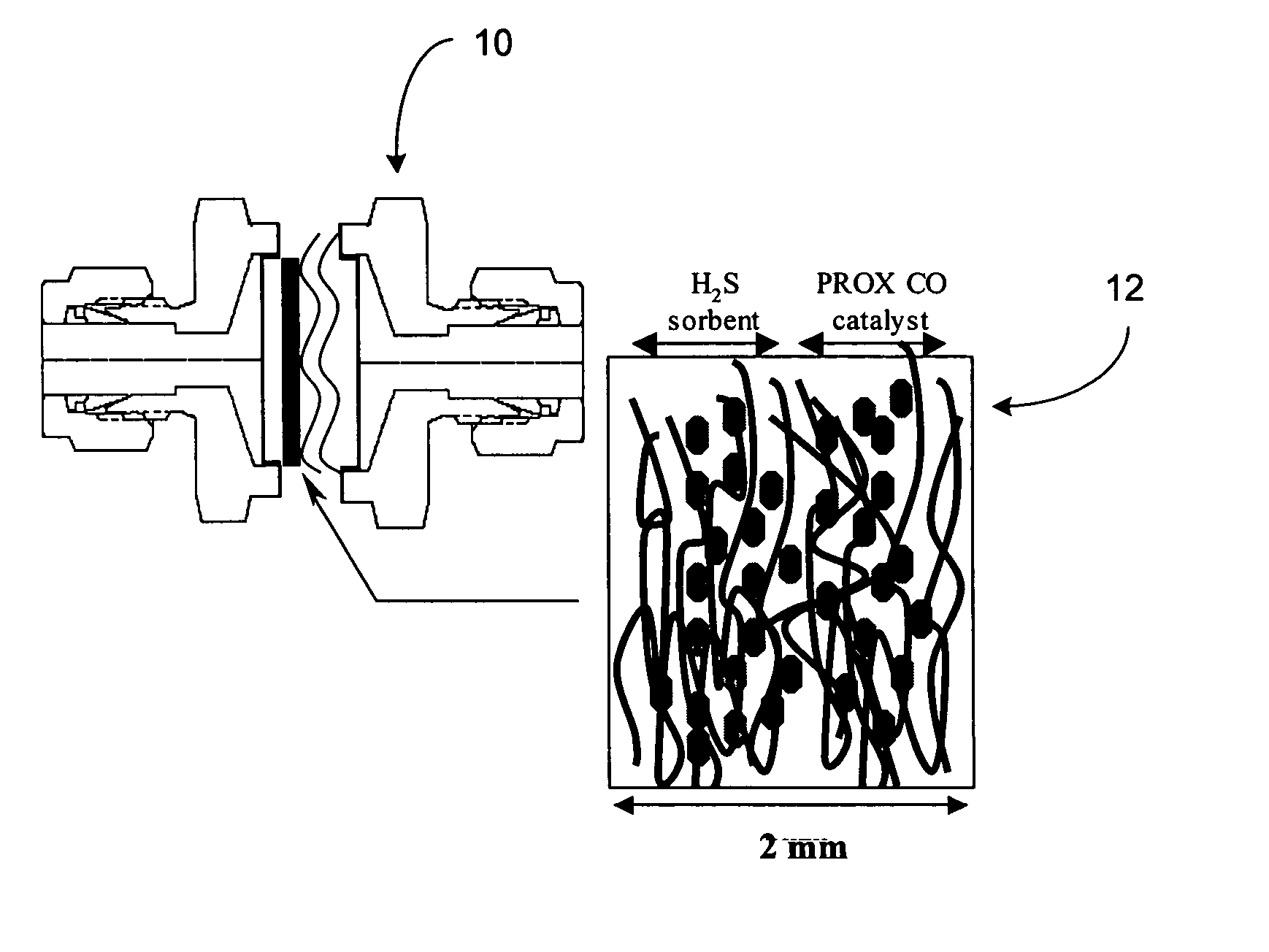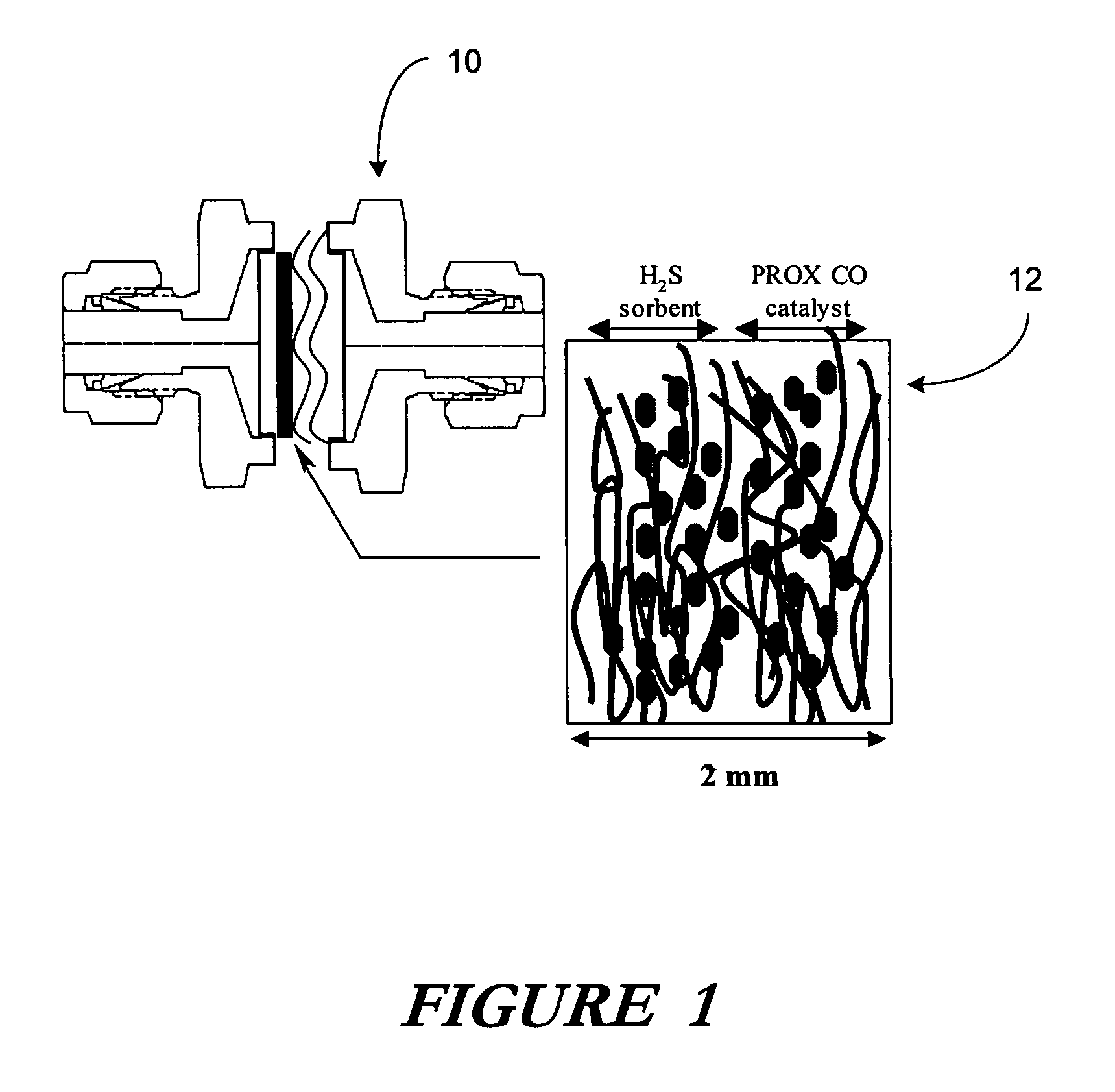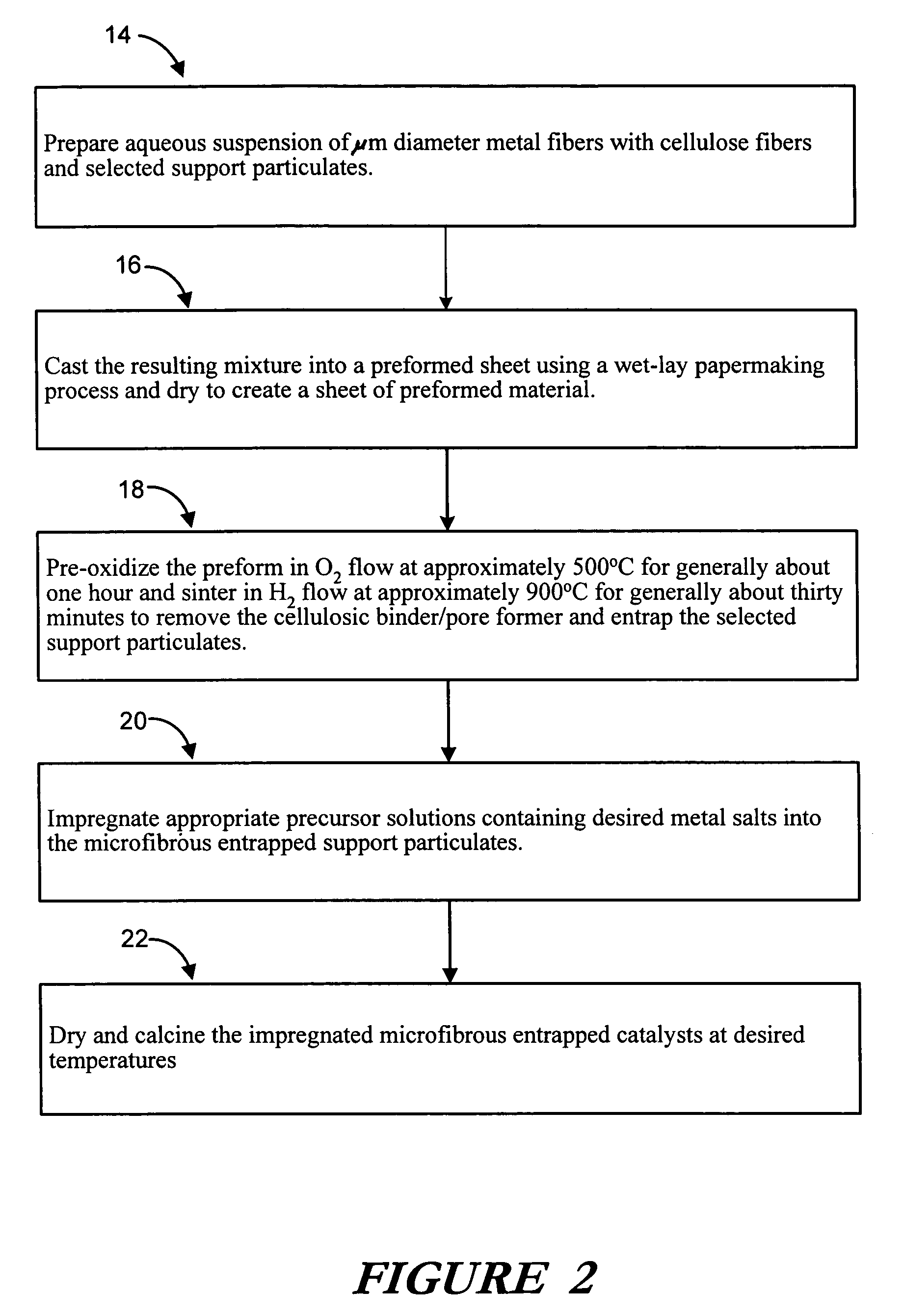Microfibrous entrapment of small reactive particulates and fibers for high contacting efficiency removal of contaminants from gaseous or liquid streams
a reactive particulate and microfibrous technology, which is applied in the direction of electrochemical generators, filtration separation, separation processes, etc., can solve the problems of limited useful life and performance attributes of filters, limited contact efficiency with liquid, gaseous or air streams, and low chemical conversation rates, etc., to achieve high activity and desirable selectivity, easy to fuse, and excellent performance
- Summary
- Abstract
- Description
- Claims
- Application Information
AI Technical Summary
Benefits of technology
Problems solved by technology
Method used
Image
Examples
examples
[0034]In one exemplary embodiment of the present invention in which the filtration reactor of the present invention is specifically designed for conversion of CO upstream of a PEM fuel cell, it can be seen that in the absence of Pt metal there exists no CO oxidizing activity at temperatures below 100° C. where a Co promoted Alumina support is used in the reactor. Even at temperatures above 250° C., CO conversion is only 40%. This is explained by the fact that Pt plays a crucial role in CO oxidation by providing the sites for CO adsorption and the Co promoter on alumina allows for more facile O2 adsorption. As a result, it can be seen that the present invention, including, but not limited to the present embodiment of a Co promoted Pt / Alumina catalyst within the microfibrous filtration mesh / reactor, provides an increased selective CO oxidation removal activity thus extending the life of any downstream PEM anode or cathode catalysts which are extremely sensitive to CO poisons.
[0035]Typ...
PUM
| Property | Measurement | Unit |
|---|---|---|
| thickness | aaaaa | aaaaa |
| temperature | aaaaa | aaaaa |
| temperature | aaaaa | aaaaa |
Abstract
Description
Claims
Application Information
 Login to View More
Login to View More - R&D
- Intellectual Property
- Life Sciences
- Materials
- Tech Scout
- Unparalleled Data Quality
- Higher Quality Content
- 60% Fewer Hallucinations
Browse by: Latest US Patents, China's latest patents, Technical Efficacy Thesaurus, Application Domain, Technology Topic, Popular Technical Reports.
© 2025 PatSnap. All rights reserved.Legal|Privacy policy|Modern Slavery Act Transparency Statement|Sitemap|About US| Contact US: help@patsnap.com



